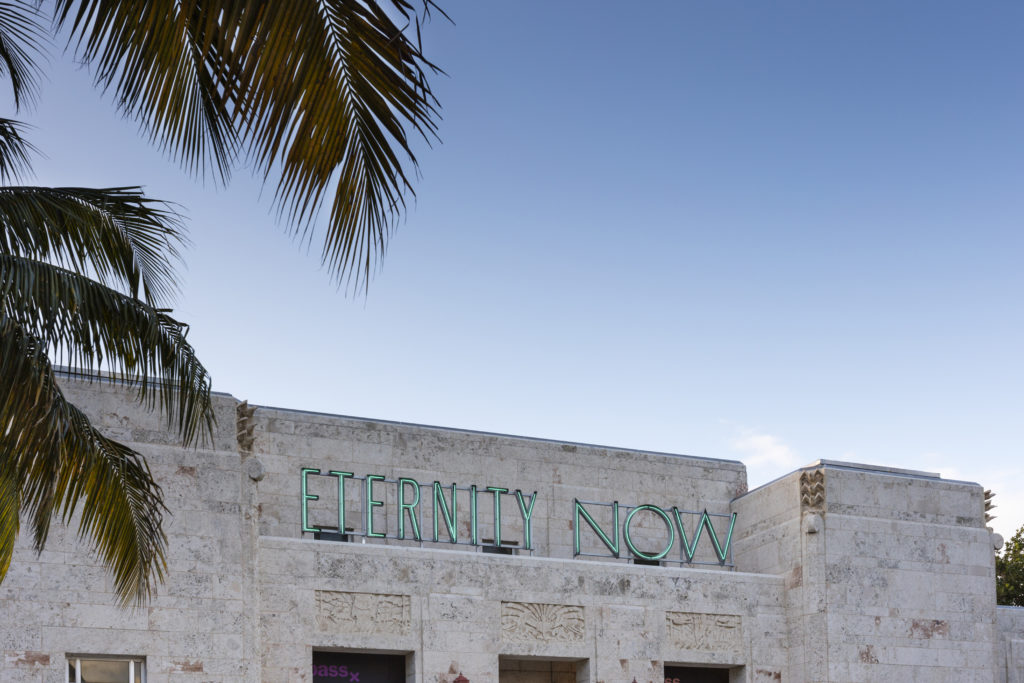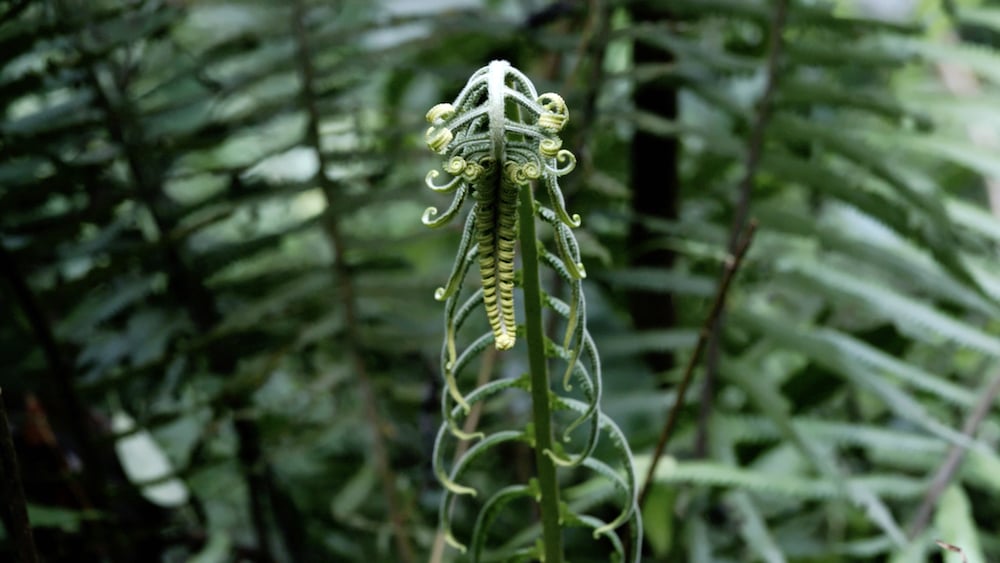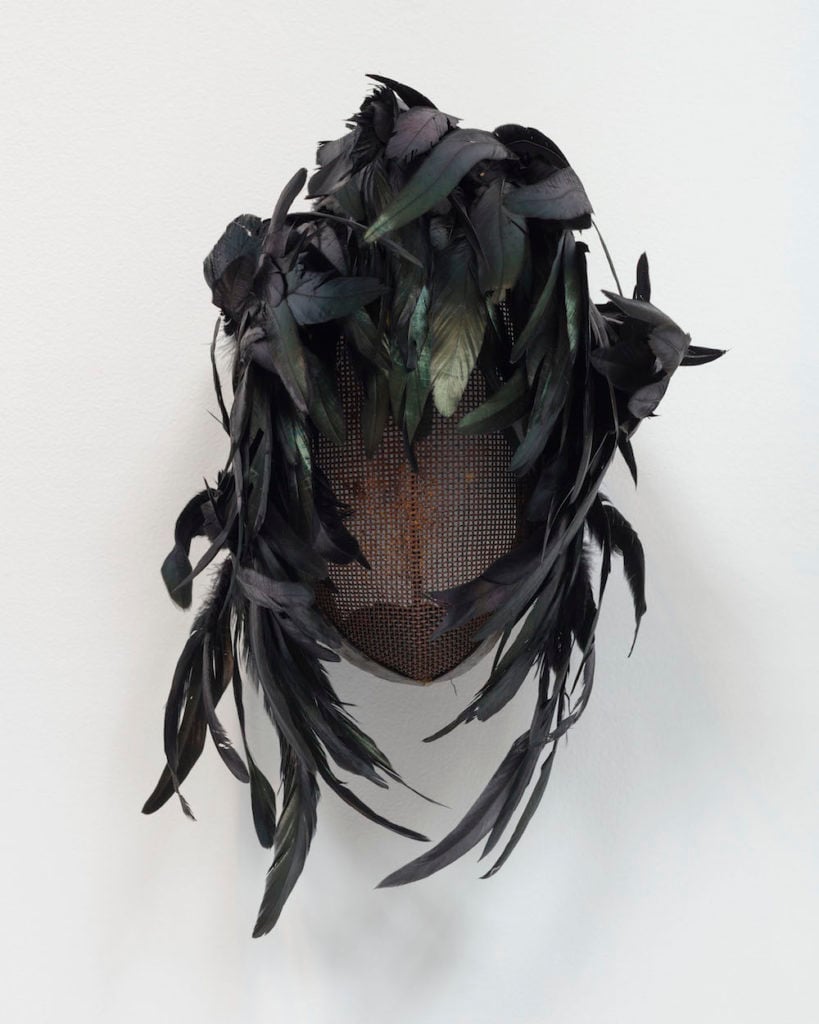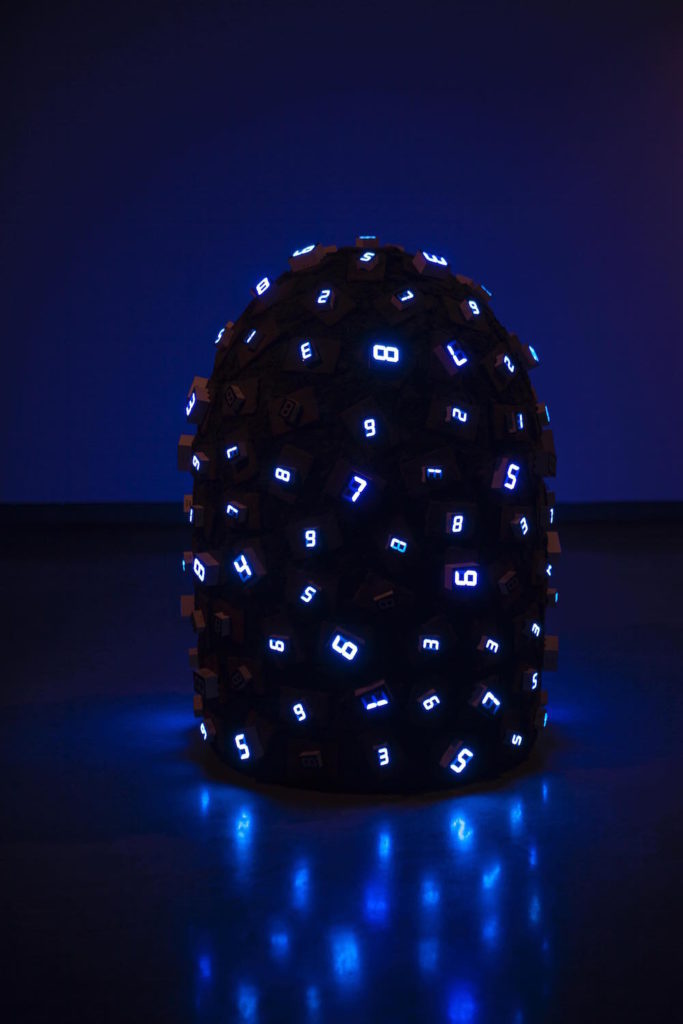Art Fairs
As Jetsetters Prepare to Descend on the Eroding Shores of Miami, Art Basel Awkwardly Tries to Address Climate Change
How can an industry that hinges on international travel confront climate change?

How can an industry that hinges on international travel confront climate change?

Eileen Kinsella &
Naomi Rea

As Art Basel Miami Beach prepares to open this week, the subject of climate change has once again come center stage in the art world. One of the American cities most vulnerable to climate disasters, the sea-level rise in coastal Miami has tripled over the past decade and the city has resorted to importing sand to restore its rapidly eroding coastline.
To confront the worsening effects of the climate crisis, artists and institutions around the city are organizing panel discussions and art projects, both at the fair and beyond, over the next week.
“Addressing the environmental impact of the international art world is a pressing issue,” a spokesperson for Art Basel tells Artnet News. “Art fairs are not by their nature environmentally friendly as they require extensive travel and shipping and create waste.”
The fair is currently looking at long-term initiatives to improve its ecological footprint, and has created an internal working group to investigate strategies for reducing its environmental impact.
This year, Art Basel Miami Beach is hosting a panel on climate change denial, “which from what I understand is still a really big issue in the United States,” says Stefanie Hessler, a curator and writer who is moderating the discussion. “One pressing question—the old question—is what role does art actually play when it comes to social justice and environmental justice? What are the limitations of the art world?” says Hessler, who will be joined on the panel by artists Allison Janae Hamilton and Alexis Rockman, author David Wallace-Wells, and Miami-based environmental activist Sonia Succar Ferré.
“Part of the tradition of art is to be activist on some level, so I see my job as showing some of the implications of these ideas, these facts that are being ignored by the general public, and trying to speak out about it,” Rockman tells Artnet News. “Just in the same way that people have been political in terms of gender equality or racial equality, this is an issue of global equality.”

Zheng Bo, Still from Pteridophilia IV (2019). Image courtesy of the artist and Edouarde Malingue Gallery, Hong Kong and Shanghai.
One of the biggest carbon expenditures of art fairs is the footprint left by all of the guests, organizers, artists, and artworks traveling by plane to attend. “The irony of getting on a plane to go talk about those issues doesn’t escape me, and I feel terrible about it. I’m very conflicted,” Rockman says. “I want to be Greta [Thunberg] and get in my rowboat and go down there, but that’s just not feasible for many reasons, and that’s one of the agonies of being alive at this moment in history: the conflict that we all have to face in terms of the things we eat, the amount of water that we use, even the materials that I make the work out of—I was literally wondering if the wood panel I’m working on came from Borneo and I thought of an orangutan.”
In an effort to balance out this damage, Art Basel says it’s paying to carbon offset the flights of its team, VIP representatives, external consultants, operational partners, and media guests, as well as the speakers from the Conversations program.
But some activists remain incredulous at the spectacle of wealthy fair goers shopping at the site of climate change’s ground zero. “People are flying in on private jets to buy art in a region that is on the frontlines of climate change,” says William Skeaping of the activist group Extinction Rebellion. “How are we promoting and allowing this insane global circus to continue?”
“Miami is literally a frontline of climate change and the very presence of Art Basel Miami is threatened,” Skeaping adds. “It’s almost an incredible and artistic self-destructive loop. The more people come to Art Basel Miami Beach, the faster Art Basel Miami Beach disappears. All these people with art collections and new foundations in Miami are actually threatened by the people who come to visit them—the loop is completely unsustainable.”

Allison Janae Hamilton, Fencing Mask with black feather headress (2019). Image courtesy of the artist and Marianne Boesky.
For some in Miami, that threat is already being acutely felt. The Bass Museum of Art has had to adapt to the new reality of flooding and storm surge caused by hurricanes, tropical storms, and king tides. “From June to November, we are living in what is called the cone of uncertainty,” the museum’s executive director, Silvia Karman Cubiñá, tells Artnet News. (The Bass’s current show of work by artist Haegye Yang takes its title, “In the Cone of Uncertainty,” from the phrase.)
When Hurricane Irma hit the museum in 2017 it was just a “dress rehearsal” for a new era of climate catastrophe, Cubiñá says. “We were all set to move into a newly renovated building, and we weren’t sure whether we would have to start construction all over again when we returned.” Fortunately, the museum survived and opened its new $12 million space after just a short delay.
The museum has since adjusted to a new normal. It has moved all of its art in storage offsite onto the mainland of Miami, and it takes added precautions when planning installations. “We think twice about work that is difficult to lift and avoid installing those works on the first floor, should we need to enact our hurricane preparedness plan,” Cubiñá says. And when collecting work, especially for outdoor sculptures, the museum now more carefully considers the surface of the art and whether it can withstand the exposure to “blistering sun and saltwater off the ocean.”
Sylvie Fleury’s monumental installation Eternity Now on the Bass’s exterior, for example, will need to come down in the event of a major storm. (The museum has a standing contract with a crane company to deinstall the work once a hurricane watch is upgraded to a hurricane warning.)

At least 10 of the projects at this year’s fair will specifically address climate change, the environment, or natural disasters, according to Art Basel organizers. Artist Tatsuo Miyajima responds to the changing environment with his “Pile Up Life” series, a mound of stones reminiscent of an ancient memorial that conveys the powerlessness of humans in the face of nature.
Meanwhile, the Lisbon gallery Madragoa will present a new project by Italian artist Renato Leotta, Il mare é tutto azzurro, in which the artist aims to create an immersive, lyrical environment that is related to landscape painting but uses the landscape itself as a medium. In the same “Positions” section, Sao Paulo gallery Marilia Razuk will show Newspapers by Vanderlei Lopes, comprised of a dozen cast pieces of bronze that resemble newspapers with headlines concerning recent worldwide natural and cultural catastrophes, scattered on the floor.
Elsewhere, Edouard Malingue gallery will present works by Zheng Bo, including Pteridophelia 4 (2019), the fourth chapter of the artist’s ongoing investigation into ferns, as well as the open book Survival Guide #3 (2019), which addresses colonial assertion through the foil of identified edible plants. And New York gallery Venus Over Manhattan is showing works by Joseph Yoakum, who is known for densely patterned and flattened drawings that feature vibrantly colored geographies, flowing streams, and layers of receding trees.
Allison Janae Hamilton, who’s also participating in the fair’s climate-change panel, tells Artnet News that she is presenting a series of found masks that she embellishes with different elements from the surrounding landscape where she grew up in Northern Florida. She sees her work as addressing the ways “the environment really is a story of people and lived experience and not just the science behind it all,” she says. “It’s really important to look at who the most vulnerable people are, and as natural disasters like hurricanes and other occurrences grow more and more intense, [to ask] how are they illuminating and shedding light on the already existing social disasters?”

Misael Soto, Flood Relief (2017) at Museum Park, Miami. Seawall adjacent to Pérez Art Museum. Courtesy of the artist.
Given the scale of the task at hand, it’s fitting that Soto was just invited to stay on in the residency for an extra year.
Additional reporting by Kate Brown.